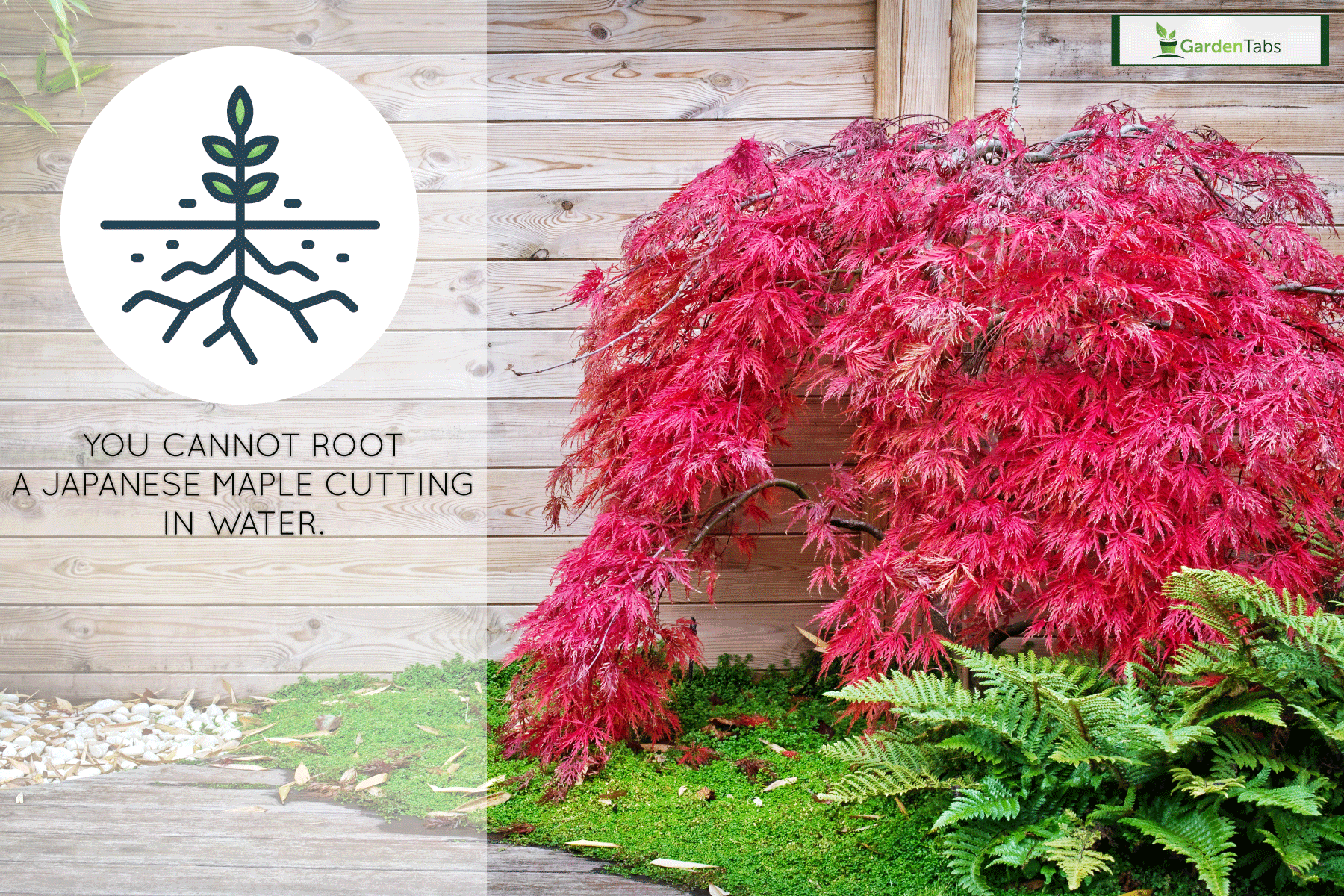Some Japanese maple varieties are known for their brightly colored leaves that stand out during fall. You might be wondering if you can grow the same tree in the comfort of your home, especially if you already have a cutting in hand. Well, look no further! We have done the research to provide you with everything you need to know about rooting a Japanese maple cutting.
You can't root a Japanese maple cutting in water. The chances of it developing roots in water are very little to none because the stagnant water will deplete the oxygen roots require to grow. Japanese maple needs enough oxygen to propagate, and submerging a cutting in water will cause the root to rot before it can grow.
While the process of rooting plants in water is convenient, attempting it with a woody plant such as a Japanese maple is not the best choice. However, there are still effective and easy ways of propagating maple cuttings at home. Continue reading as we discuss essential information you will need to successfully grow a Japanese maple from a cutting.
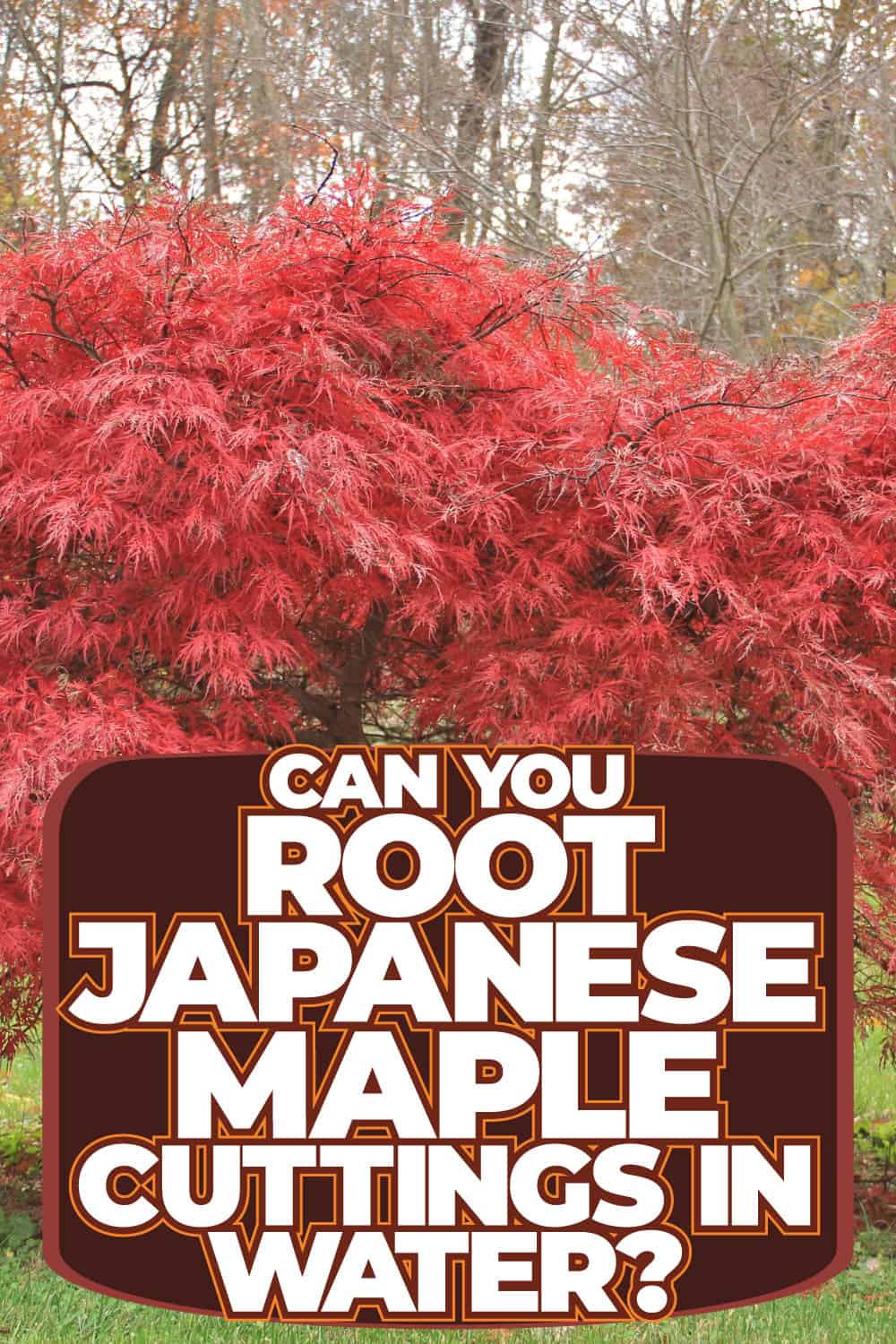
Why Can't I Root Japanese Maple Cuttings In Water?
Japanese maple is a deciduous tree, so it belongs in an environment where the four seasons are in the cycle. To emulate such plant living conditions in your home garden, you need to provide soil that is rich in microorganisms present in a deciduous forest. You also need to create good drainage in the plant's container to prevent the soil from being saturated with water.
A deciduous plant will thrive best in forests that belong to zone 5, and the regions that belong in this zone experience temperatures as low as -20°F. This means that the environment a Japanese maple tree is native to has drier conditions than tropical regions. Attempting to root a Japanese maple, or any other deciduous plant in water will produce very little to no positive result, and will instead most likely kill the cutting.
Deciduous plants are not the only cuttings that will not be able to propagate in water. Most woody plants need substantially more oxygen to grow roots compared to your everyday houseplant. If you do choose to propagate a plant cutting in water, make sure to choose a plant that is not sensitive to water-saturated soil.
How Do I Root A Japanese Maple Cutting?
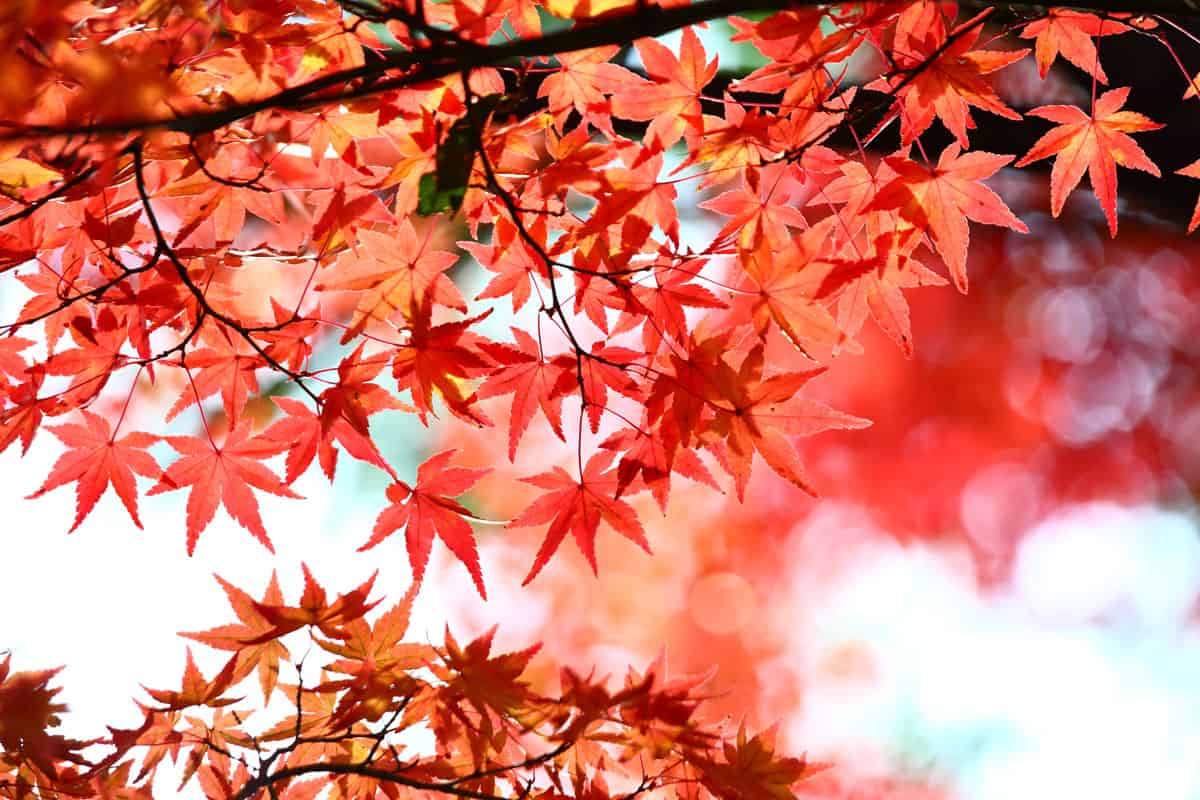
While rooting a cutting in water is a convenient way of plant propagation, it is not the only easy process available to home gardeners. The most important thing to remember when trying to root a cutting is that the root has to be handled carefully to give it a higher chance of surviving during the transplantation process. So even if you do choose to root in water, you have to be careful not to injure the growing roots, or else harmful bacteria will attack them, which will then kill the cutting.
You can root a Japanese maple cutting in a container filled with moist potting soil instead. The process is not as simple as water propagation, but it is still uncomplicated and the right soil will not accumulate a high density of harmful bacteria that a stagnant container of water would. Below is a simple guide to help you successfully root a Japanese maple cutting at home.
- Choose a pot with a good drainage system. If this is not available to you, you can use a container and poke a good amount of holes to let the excess water drain. Make sure that you use a sturdy material that will not create cracks or leaks.
- Fill the container with moist potting soil.
- Create a small pit in the soil. Make sure that the pit will cover about 2/3 of the length of the branch.
- Cut the maple branch to about 6" in length.
- Trim the leaves on the side and top of the stem until there are only two leaves located at the top.
- Carefully wash the cutting in water and soap to disinfect.
- In a separate container, place a dab of liquid or jelly rooting hormone and dip the end of your cutting in it.
- Place the cutting into the soil and push the soil to tuck the branch in.
- Water the pot to allow the soil to seal around the freshly planted cuttings. After watering, allow the pot to drain until the soil is just moist to the touch.
- You can choose to put the pot into a sealable bag to create a mini greenhouse and only water when needed. If not, mist the pot twice a day.
- Allow the pot to rest in a warm but shaded area. Expect the maple cutting to sprout root in about 3-4 weeks. Until then, avoid pulling up the cutting to check for growth.
If you are planning to bury the Japanese maple directly to the ground, allow it to grow for at least a year in the pot before transferring the plant. The best time to do this is during the upcoming spring after the maple had already spent a year maturing inside the pot. You can relocate it to an area where there it can receive gentle sunlight under a shade to avoid the heat from scorching the thin, sensitive leaves.
How Do I Take Care Of A Japanese Maple Tree?
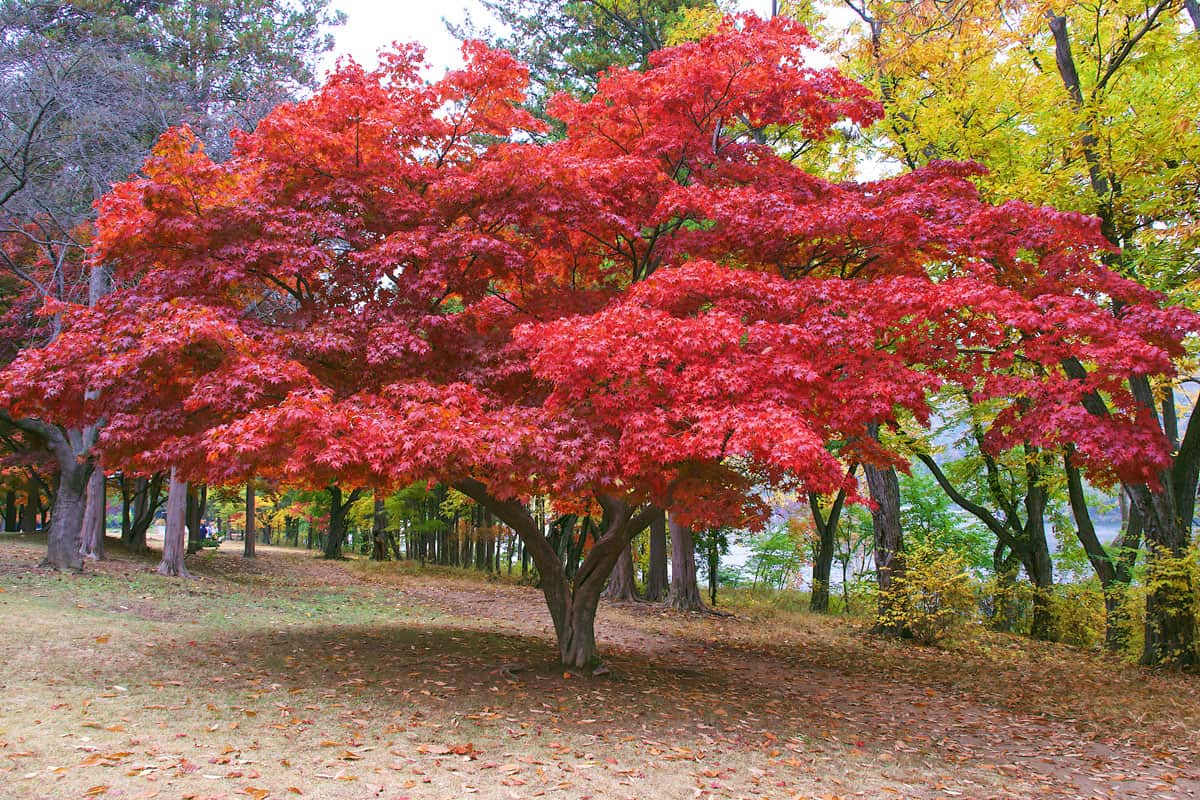
It's fairly straightforward to take care of a Japanese maple tree, provided that it is planted in its ideal environment. Just as we discussed above, the tree needs gentle sunlight to avoid injuring the delicate leaves. This is especially true when the plant is still young, but some gardeners choose to allow direct sunlight to older trees because it makes for an even more vibrant color during fall.
There are a few more things to keep in mind when growing your own Japanese maple tree. Below are some tips you can follow in order to properly take care of the plant.
Provide Just Enough Water
Avoid excessively watering your maple tree. If the tree is still in a pot, make sure that the bottom is properly elevated to allow water to flow out through the drainage. For a young plant, habitually water twice a week in the span of three to four months to allow the root to fully integrate into the soil.
For a full-grown Japanese maple tree, only water the soil once a week, or when the soil feels dry to the touch. It is suggested that reducing this frequency around the fall season will result in an even more vibrant foliage.
Fertilize When Needed
Fertilizing a tree can assist the healthy growth of roots and leaves, but it is not always necessary. If you have planted the tree in rich soil and have noticed that the foliage appears healthy enough, then there is no need to fertilize the tree. In addition, avoid fertilizing young plants and only do so in the upcoming spring of their second year.
If you do need to fertilize your Japanese maple tree, the ideal time to do it is around late winter to early spring. Make sure to purchase the correct type of fertilizer for a Japanese maple and follow the instructions on the product carefully to avoid damaging the plant. You can choose a granular type fertilizer to prevent the chances of a liquid one from burning the roots.
Choose The Correct Soil
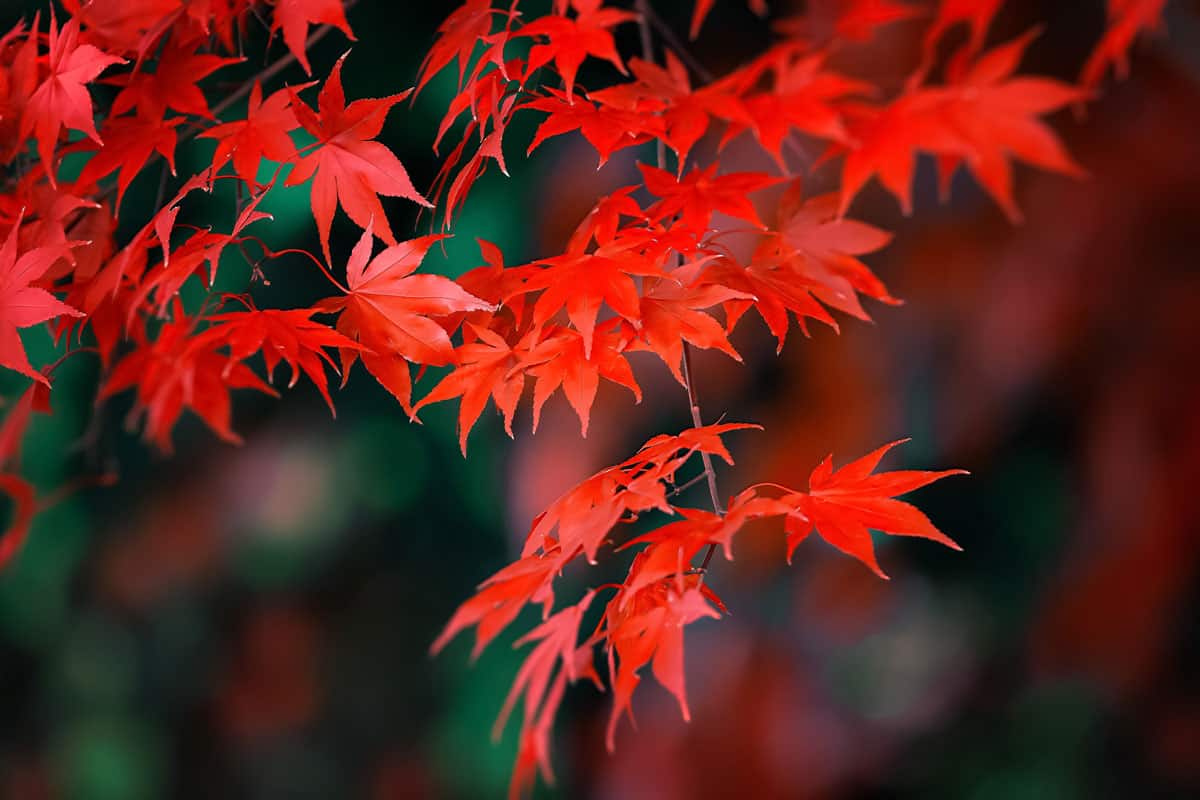
Again, proper drainage is a very important factor to support the growth of a healthy Japanese maple tree. Choose soil that will not retain too much water to protect the roots from rotting. It is also not recommended to plant it in soil with high alkalinity because it will affect the ability of the root to soak up essential nutrients required for growth.
When choosing soil for your Japanese maple, look for a mixture with slight acidity. Loam soil, which is a common gardening soil, works well with a Japanese maple plant. This type of soil can retain enough moisture while draining excess water to allow oxygen to reach the roots.
Support Moisture Retention
While a Japanese maple needs soil that drains well, it still needs enough moisture for the roots. To do this, you can choose to add mulch around the tree's base to reduce water evaporation during the summer and winter seasons. Mulch is also great insulation for your tree's roots, and this added layer of protection will keep the ground from cracking due to drought.
Apply about 2-4" thick of mulch about 6" away from the base of the trunk up to the end of the tree's drip line. The drip line is simply the outermost perimeter of the tree extended to the ground. Imagine if the tree were dripping, where the drips would fall.
When applying mulch, make sure to avoid piling it around the base of the trunk. Doing so will pose harm to the tree as much as over-watering it. Overmulching will end up starving the roots of their needed oxygen, which can lead to root suffocation and even the development of fatal plant diseases.
To Wrap Up
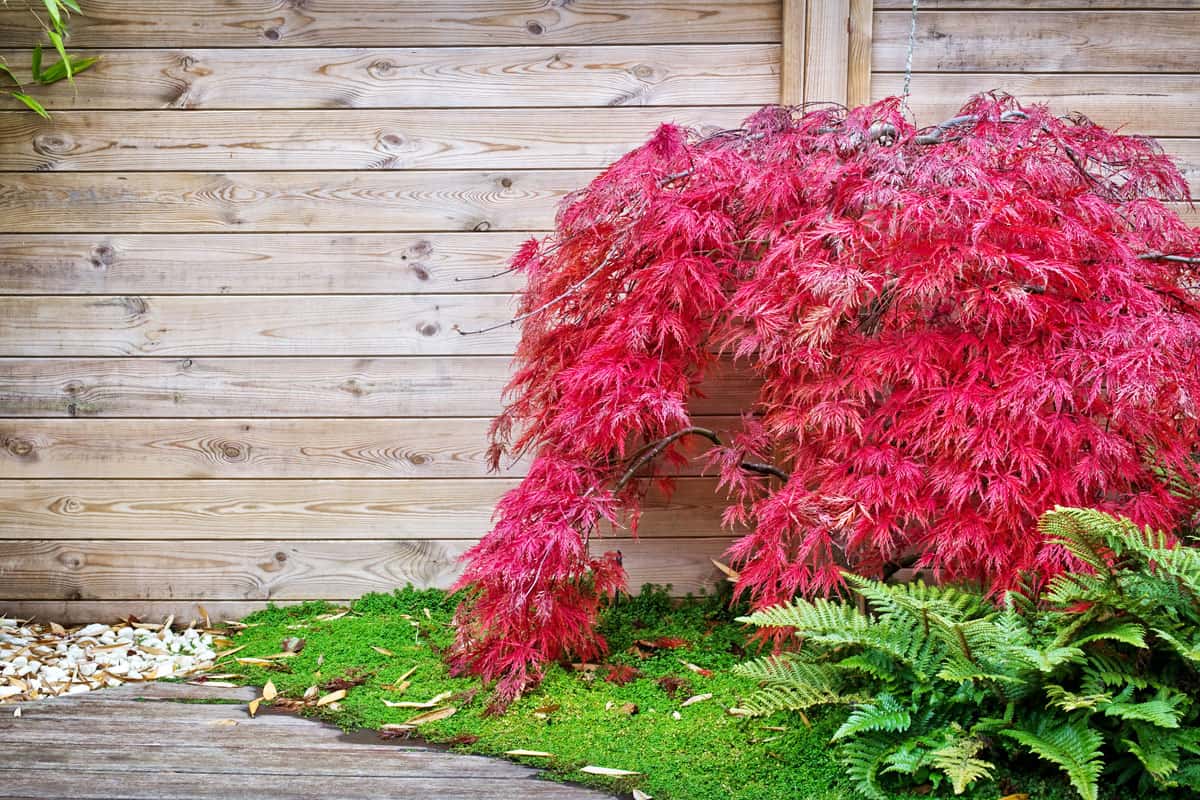
Japanese maple trees have vibrant foliage that makes for a beautiful addition to a garden. With the correct technique, it is simple to grow and care for your own Japanese maple in the comfort of your home.
In this article, we discussed about the practice of rooting a Japanese maple cutting through the process of water propagation, and why it is not the most ideal way of growing the plant. Make sure to follow the best method of growing a Japanese maple tree so you too can enjoy its vibrant foliage for many years to come.
Made it to the end? Check out some of our other related posts!
What To Plant Under Maple Trees [Inc. Japanese Maple]
Best Fertilizers For Maple Trees – 4 Different Types To Consider
